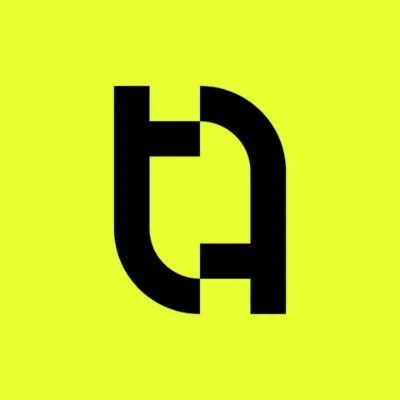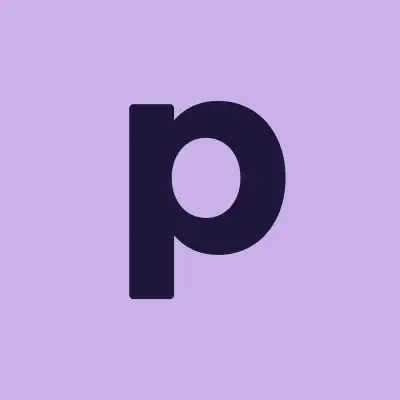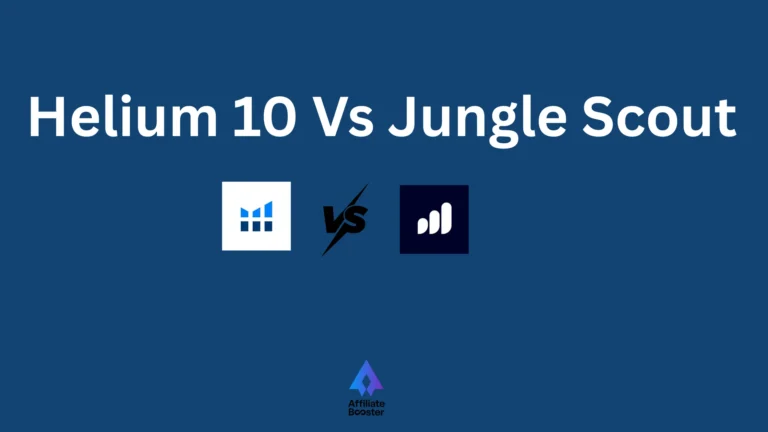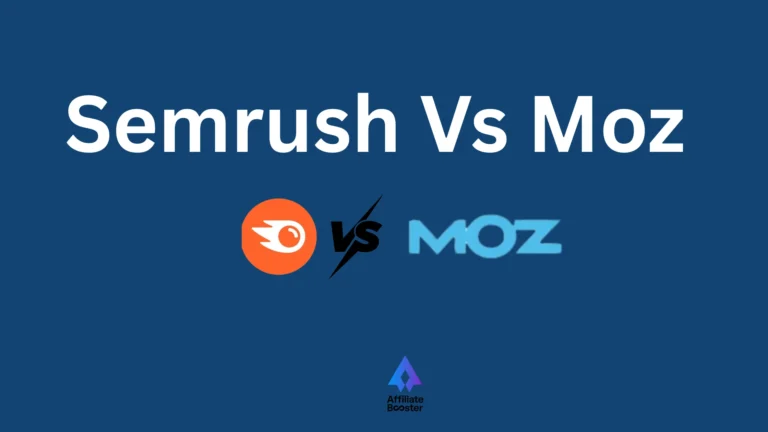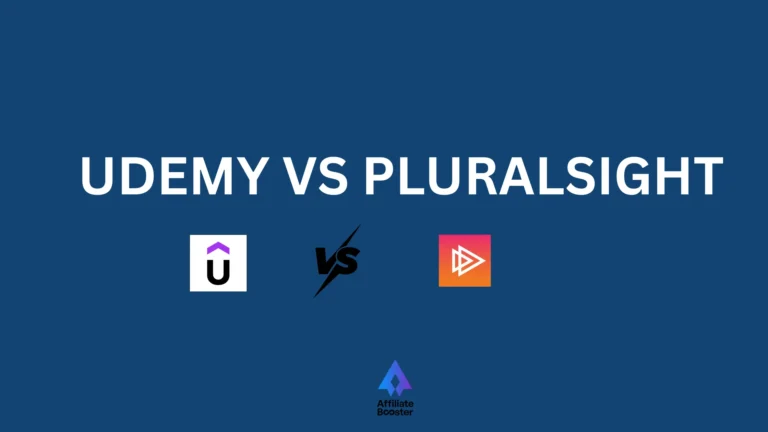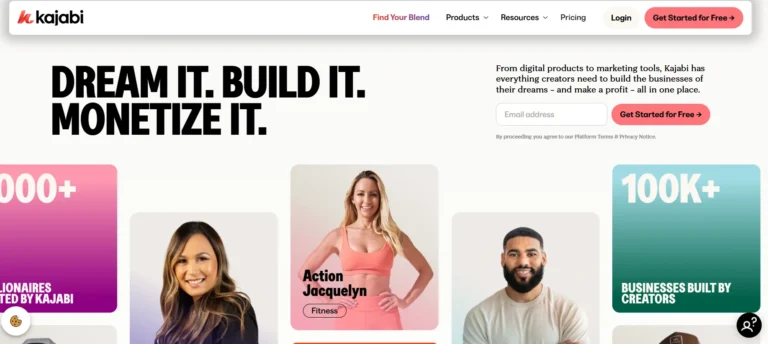Best For | Course creators looking for depth and control over course structure. | Creators wanting an all-in-one platform for courses, memberships, and more. |
Pricing | Free plan, paid plans starting at $39/month. | Starts at $36/month |
Features | -Advanced course creation tools | -Simple course creation |
Pros | -Strong customization options | -Easy-to-use, all-in-one platform |
Cons | -Limited integrations | -Limited control over course structure and design |
If you're building an online course business, you’ve probably wondered Teachable vs Podia, which one is the right choice for you?
Both are well-known platforms that help creators create and sell online courses. However, they cater to different needs and have distinct features.
You want a clear answer so you don’t waste time switching platforms after investing a lot of effort.
In this blog, we’ll give you a detailed comparison of both tools. By the end, you'll have a clear understanding of what each platform offers and which one aligns best with your business goals and needs.
Quick Verdicts on Teachable Vs Podia :
- Teachable is ideal if you need a platform for detailed online courses with advanced features like graded quizzes, assignments, and in-depth student tracking.
- Podia is a great choice if you want an affordable, all-in-one platform to sell courses, memberships, digital products, and webinars with built-in marketing tools and no transaction fees on paid plans.
- Teachable has a mobile app for students, strong analytics, but charges transaction fees on lower plans (Free: 10% + $1, Basic: 5%). It also lacks built-in blogging and email marketing.
- Podia offers unlimited products, simpler quizzes, and good marketing tools (email, blogging, live chat), but it has no mobile app and less detailed analytics than Teachable.
Teachable Vs Podia Ultimate Comparison
Teachable Overview
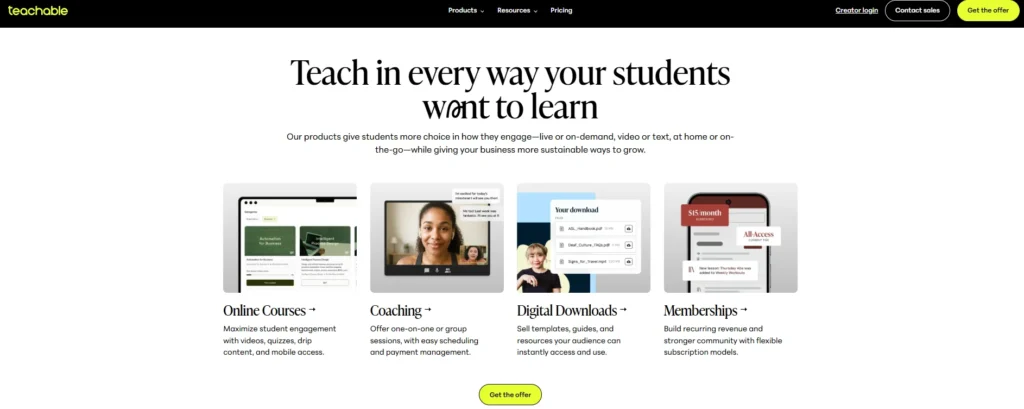
Teachable is a platform built for creators who want to build in-depth, structured courses. It provides powerful tools for creating detailed content, including quizzes, assignments, and certificates, making it ideal for comprehensive courses.
The platform also provides strong student tracking and analytics, which help you monitor progress and engagement.
Teachable is great for creators who want to have full control over the course structure and delivery. It offers a mobile app for students, allowing them to access courses on the go.
However, it does charge transaction fees on lower-tier plans, and it doesn’t include built-in email marketing or blogging features. To access these, you would need to integrate third-party tools.
Podia Overview

Podia, on the other hand, is an all-in-one platform that makes it easy to sell courses, memberships, digital products, and run webinars.
It’s designed for creators who want to manage everything in one place without dealing with complex setups or integrations.
Podia includes built-in marketing tools like email campaigns, blogging, and live chat support, making it convenient for creators to handle both content and customer interaction from a single dashboard.
One of Podia’s biggest advantages is that it doesn’t charge transaction fees on any paid plans, so you keep all your earnings.
However, it lacks advanced features like in-depth analytics and a mobile app for students, making it less suitable for creators who need those additional tools.
Teachable Vs Podia: Features Comparison
Course Creation Tools

Teachable offers an extensive set of tools for creating in-depth, structured courses. You can easily upload videos, text, and multimedia content to build lessons.
The platform allows you to structure your courses with chapters, sections, and lessons. One of the standout features of Teachable is its ability to add quizzes, assignments, and surveys to your courses, which helps test your students' knowledge and engage them actively.
It also allows you to drip content, which means you can release course materials over time to keep students engaged. Another key feature is the ability to issue certificates of completion, which adds value for students who complete your course.
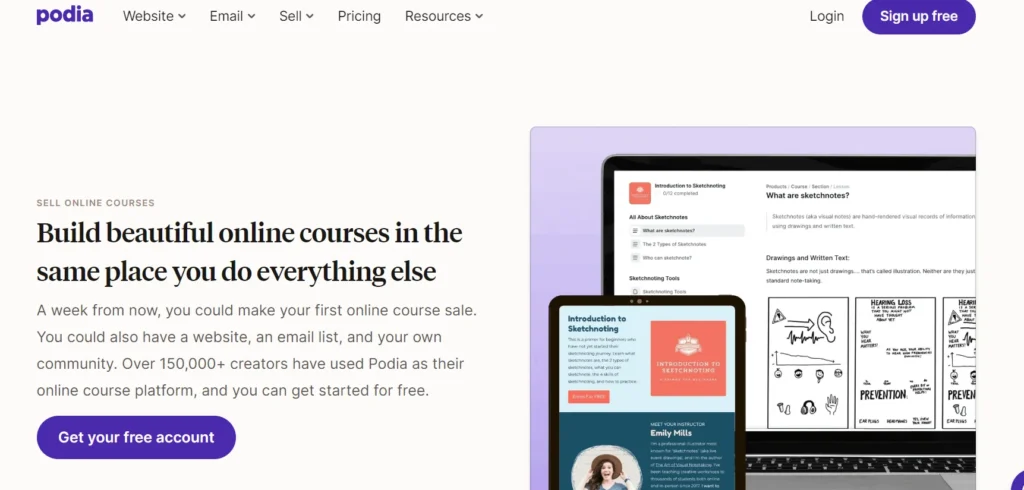
Podia takes a simpler approach to course creation. It offers a drag-and-drop interface that lets you upload video, text, PDFs, and images to create your course content.
While it doesn't have the same depth of features as Teachable (no quizzes, assignments, or certification options), it's easy to use, and you can get your course up and running quickly.
Podia is ideal for creators who want a fast, hassle-free setup for their courses, especially for shorter content or those who don't require complex course structures.
Monetization Features
Teachable offers a comprehensive suite of monetization options, making it highly adaptable for various types of course creators. You can set up one-time payments, subscriptions, payment plans, and even bundled offers to sell multiple courses at a discounted rate.
You also have the option to offer discount codes and coupons to attract more students. Teachable’s pricing flexibility means you can tailor the payment options to your audience.
However, on lower-tier plans (Free and Basic), Teachable charges transaction fees: 10% + $1 for the free plan and 5% for the Basic plan. These fees can add up, especially if you're just starting out and working with smaller margins
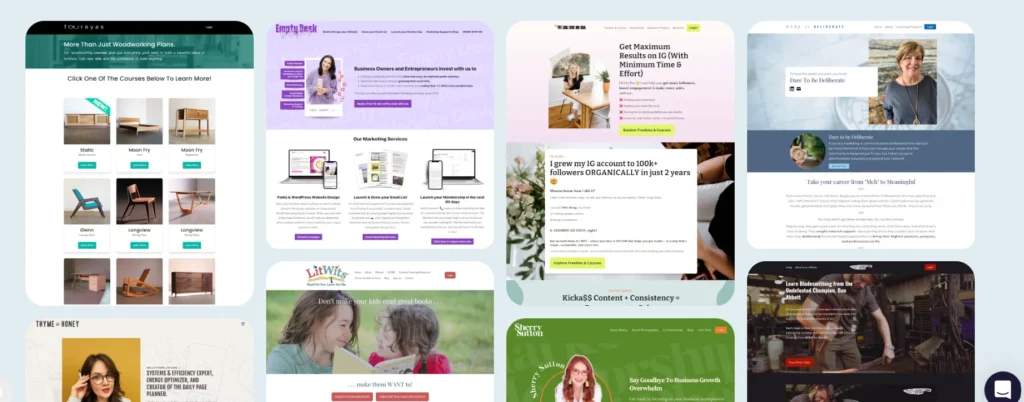
Podia is designed to be an all-in-one platform for creators, and it provides flexible monetization options without transaction fees on paid plans.
You can sell courses, memberships, and digital products like eBooks and templates with ease. Podia also allows you to create bundles of your products and offer payment plans, making it versatile.
One notable advantage is that Podia doesn’t charge any transaction fees, which means you keep 100% of your earnings on all paid plans. This is especially beneficial for new creators who want to maximize their profits.
Mobile Access and Experience

Teachable has a mobile app that allows students to access course materials on the go. This is particularly useful for students who prefer learning on mobile devices.
The app is available for both iOS and Android, and it lets students view videos, download PDFs, and track their progress in the course.
However, this mobile experience is geared mainly toward students, not course creators. As a course creator, you don’t have an app to manage your courses or check analytics on mobile.
Podia doesn't have a dedicated mobile app, which could be a drawback for creators looking for a more seamless mobile experience.
Students must use their mobile browser to access the platform, though the site is responsive and works well on mobile devices.
While Podia’s mobile experience may not be as polished as Teachable’s app, its web-based platform ensures students can still access content easily on their phones
User Interface and Usability
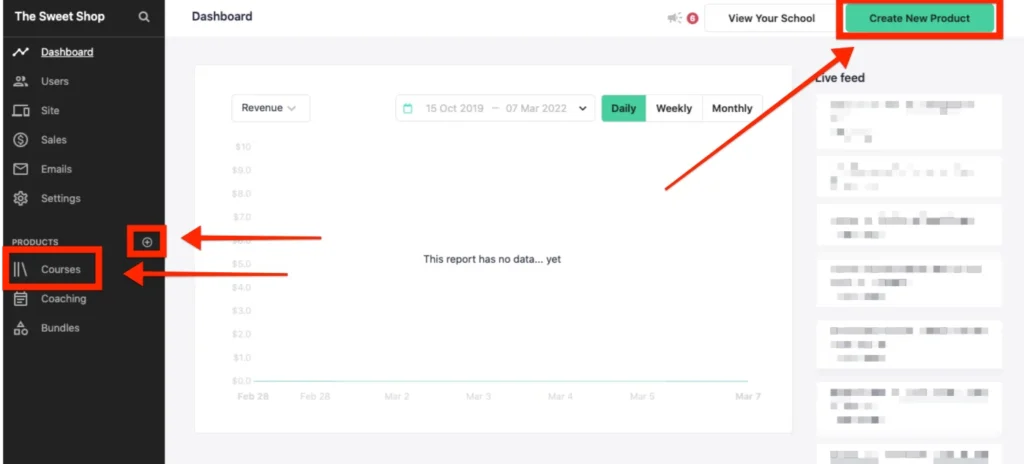
Teachable’s interface is clean but may feel complex, especially for new users. It offers extensive features, so navigating the platform and understanding how to set up courses, manage students, and view analytics can be overwhelming at first.
However, once you get used to the layout, Teachable becomes intuitive and easy to navigate. The platform’s depth and control over course customization make it an excellent choice for creators who need flexibility.
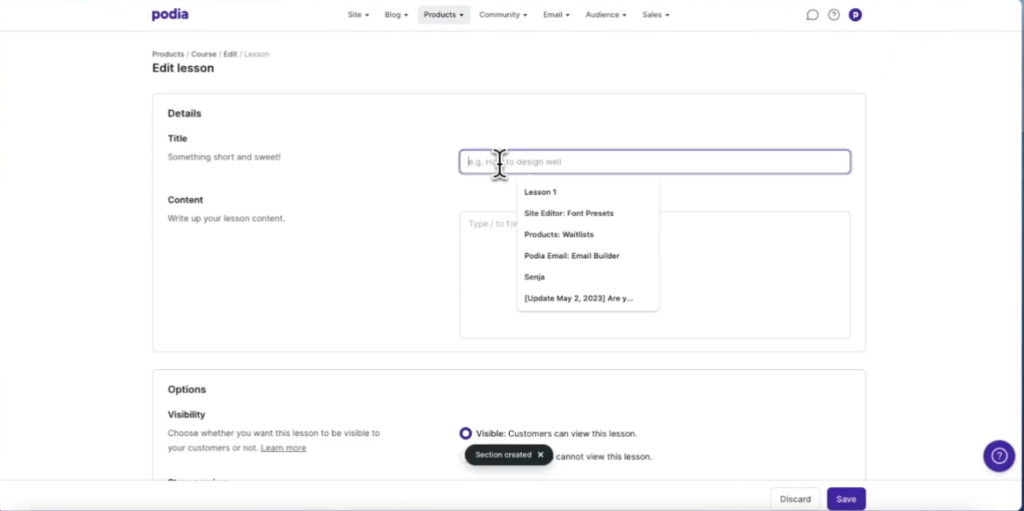
Podia’s user interface is designed for simplicity. The platform is minimalist and user-friendly, allowing you to create and launch your course quickly without being overwhelmed by too many options.
The layout is straightforward, with easy access to all your courses, products, and marketing tools from a central dashboard. For creators who want a hassle-free, easy-to-navigate platform, Podia is ideal.
Themes and Page Customization
Teachable offers a selection of pre-designed themes to help you get started quickly. While you can customize certain aspects like colors, fonts, and logos, more advanced design changes require knowledge of CSS and HTML.
The page builder is functional and allows you to create a professional-looking course site, but it doesn’t offer the deep customization options that some advanced users might desire.
Customization is possible but may require coding skills.
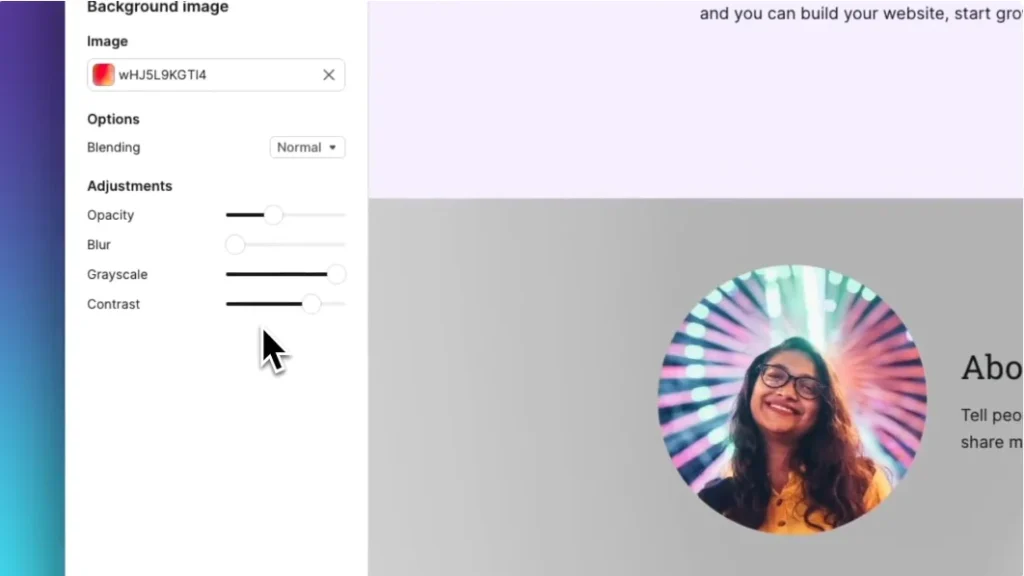
Podia offers a simple yet effective page builder, where you can choose from pre-designed templates and easily modify them. It’s perfect for creators who want a fast setup with minimal effort.
The platform allows you to customize basic elements like colors, images, and text.
However, Podia’s design flexibility is limited compared to Teachable, and it may not be suitable for creators who want a fully custom website. The trade-off is that Podia makes it very easy to set up and get started.
Community Features

Teachable offers basic community features, including discussion forums where students can interact with each other and ask questions.
This helps build a sense of community within your courses. However, if you want a more robust community experience (like chat rooms or private groups), you may need to use third-party integrations such as Slack or Facebook groups.
Teachable’s community features are functional, but don’t go beyond basic interaction
Podia stands out in this area with its built-in community feature. You can create private, members-only spaces where students can interact, ask questions, and share ideas.
The community feature is fully integrated into the platform, making it easy for both you and your students to engage. Podia also lets you organize communities around specific courses or membership areas, allowing for a more targeted and engaging experience.
If community-building is essential to your business, Podia’s built-in features will save you time and effort
Selling Digital Products
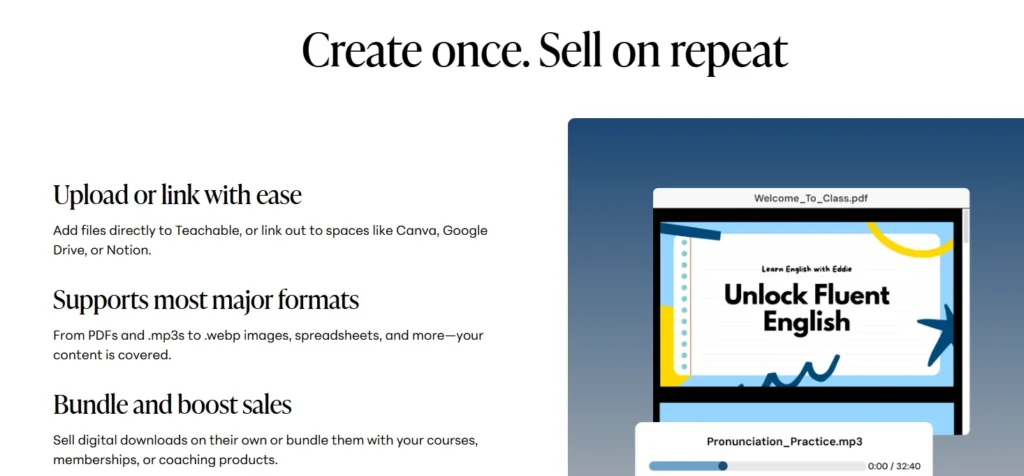
Teachable allows you to sell digital products like eBooks, PDFs, and other downloadable materials. However, it’s not as optimized for selling digital products as Podia.
You can create separate product pages for these items, but selling digital downloads is secondary to Teachable’s main focus on courses.
If digital products are a significant part of your business, you might find Podia’s offerings more suited to your needs
Podia excels in selling digital products, allowing you to easily sell eBooks, templates, printables, and other downloadable items alongside your courses.
The process is fully integrated into the platform, and you can manage both courses and digital products from one central dashboard.
If you plan to sell a variety of digital goods in addition to your courses, Podia makes it easier to manage everything in one place.
Checkout and Payment Process

Teachable offers a flexible checkout process with the ability to create different pricing models, including one-time payments, subscriptions, and payment plans.
It also allows you to customize the checkout page to some extent and offer discount codes and upsells.
However, Teachable charges transaction fees on its free and basic plans (10% + $1 for the free plan, 5% for the Basic plan), which can reduce your overall earnings, especially if you have a smaller profit margin.
Podia’s checkout process is simple and streamlined, and it comes with no transaction fees on any of the paid plans.
The platform allows you to fully customize the checkout experience to match your branding, and it’s optimized to provide a smooth, hassle-free experience for your customers.
You can also set up payment plans and discount codes to incentivize sales. Podia’s lack of transaction fees makes it more cost-effective for creators.
Email Marketing Tools
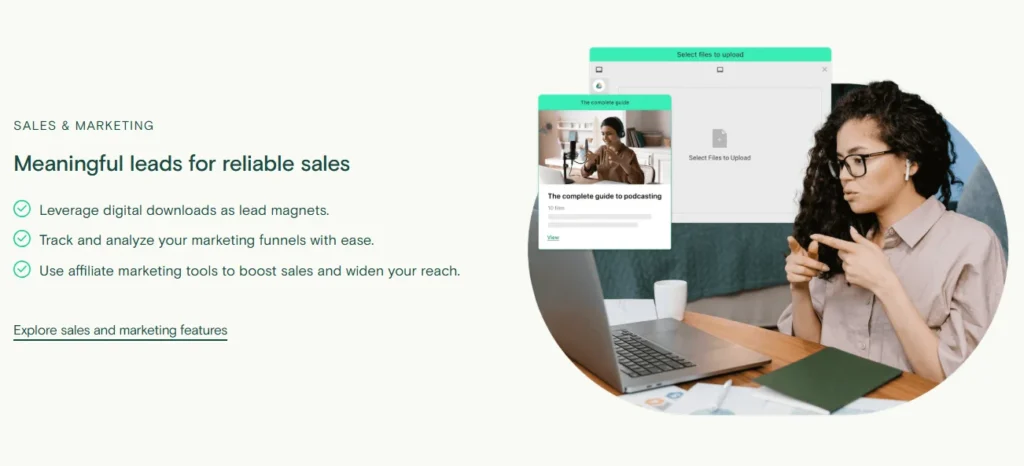
Teachable includes basic email marketing functionality, allowing you to send course updates, notifications, and announcements to your students.
However, if you need advanced features like email sequences, automation, and segmentation, you’ll need to integrate third-party email marketing tools such as Mailchimp or ConvertKit.
Teachable’s built-in email features are limited but functional.

Podia offers a full suite of built-in email marketing tools. You can send email campaigns, create automated email sequences, and segment your audience to send targeted messages.
The email tool integrates seamlessly with your courses, products, and memberships, allowing you to manage both your content and marketing in one platform.
For creators who want all-in-one marketing tools, Podia provides everything you need without third-party integrations
Integrations
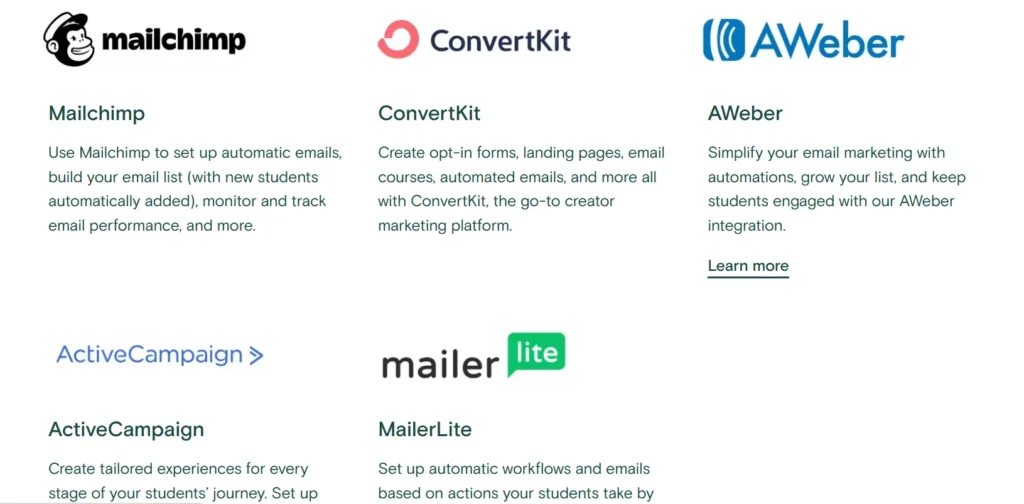
Teachable supports a wide range of third-party integrations. This includes email marketing platforms (Mailchimp, ConvertKit), analytics tools (Google Analytics), and payment processors (Stripe, PayPal).
You can also connect Teachable to automation services like Zapier, making it a highly flexible platform. However, the extensive integrations require more setup and third-party tools to maximize the platform’s potential.

Podia offers fewer integrations than Teachable, but still supports essential tools like Zapier, Stripe, PayPal, and email marketing platforms such as Mailchimp and ActiveCampaign.
Podia’s simpler approach means you don’t need many integrations, as it provides most of the tools you need directly within the platform.
It’s ideal for creators who prefer to keep things simple and don’t need an extensive set of third-party tools
Payments and Payouts
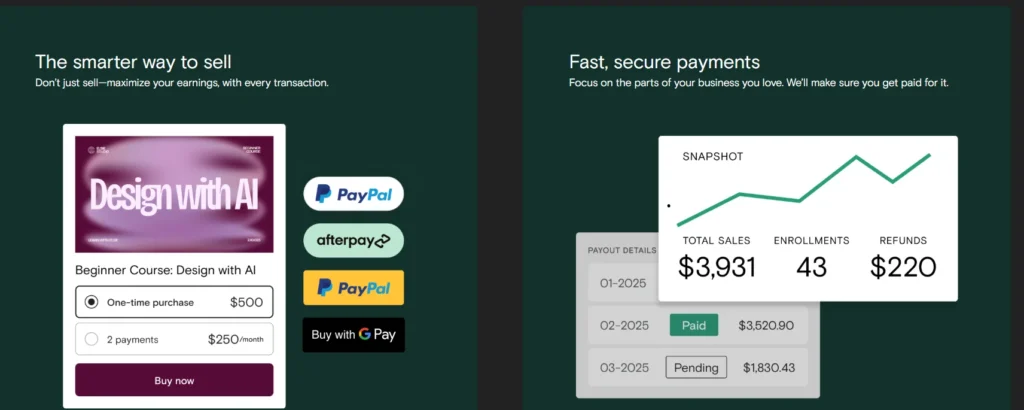
Teachable supports payments via Stripe and PayPal, making it easy to accept credit card payments globally. You can set up multiple pricing options, including one-time payments, subscriptions, or payment plans.
However, Teachable takes a cut of your sales if you’re on the free or basic plans. The payouts are processed weekly through Teachable Payments.
Podia also uses Stripe and PayPal to handle payments. The platform is designed to make payments straightforward, and the key advantage is that Podia does not charge transaction fees on any paid plan.
You get to keep all your earnings, which is a major benefit if you're looking to avoid extra costs.
Teachable Vs Podia: Pricing & Plans Comparison

1. Builder Plan
- Price: $89/month or $69/month (annual billed monthly)
- Best For: Beginners who want to create and sell a few courses.
Key Features:
- No transaction fees: Keep all your earnings.
- 5 published courses: Sell up to five courses.
- Unlimited drafts: Work on courses without limits.
- AI course creation: Use AI tools to create content.
- Student apps: Access courses on iOS & Android.
- Global payments & taxes: Accept international payments.
- Upsells & cart recovery: Boost sales with upsells and recover lost sales.
- Affiliate program: Set up affiliates to promote your courses.
- Course certificates: Offer certificates to students.
- Live chat support: Get help whenever needed.
- Bonus bundle: Includes 1:1 onboarding and extra resources.
2. Growth Plan
- Price: $189/month or $139/month (annual billed monthly)
- Best For: Course creators who need more products and marketing tools.
Key Features:
- No transaction fees: Keep 100% of your earnings.
- 25 published courses: Sell up to 25 courses.
- Unlimited drafts: Unlimited unpublished courses.
- AI tools: Use AI for course creation.
- Student apps: Mobile access for students.
- Global payments & taxes: Handle international payments.
- Upsells & cart recovery: Drive more sales.
- Affiliate program: Expand your marketing.
- White-label website: Remove Teachable branding.
- Custom admin roles: Set permissions for your team.
- Free subtitles & translations: Make your courses accessible worldwide.
3. Advanced Plan
- Price: $399/month or $309/month (annual billed monthly)
- Best For: Larger businesses looking to scale with advanced tools.
Key Features:
- No transaction fees: Keep all your earnings.
- 100 published courses: Sell up to 100 courses.
- Unlimited drafts: Unlimited unpublished courses.
- AI course creation: Use AI for faster content creation.
- Student apps: Mobile access for all students.
- Global payments & taxes: Simplify international transactions.
- Upsells & cart recovery: Optimize your sales funnel.
- Affiliate program: Manage affiliates.
- White-label website: Fully customize your website.
- Unlimited integrations: Connect to other software tools.
- Live chat support: Get support when you need it.
4. Unlimited Plan
- Price: Custom pricing
- Best For: Large businesses with complex needs.
Key Features:
- All features of the Advanced Plan, plus:
- Custom product & admin limits: Tailor your plan to your needs.
- Bulk sales management: Handle large volumes of sales.
- Automated international taxes: Simplify global payments.
- Dedicated support: A personal success manager.
- Sandbox school: Test new features without affecting your main account.
Special Offers for All Plans:
- 3 months for the price of 1: Get 3 months for the price of 1 on any monthly plan.
- 7-day free trial: Try the platform before committing.
- 30-day money-back guarantee: Full refund if you’re not satisfied.
To Grab More Latest Discount & Coupon Codes, Check out: Teachable Coupon Code: 20% OFF Promo Codes + Free Trial🔥
Podia’s Pricing Plans
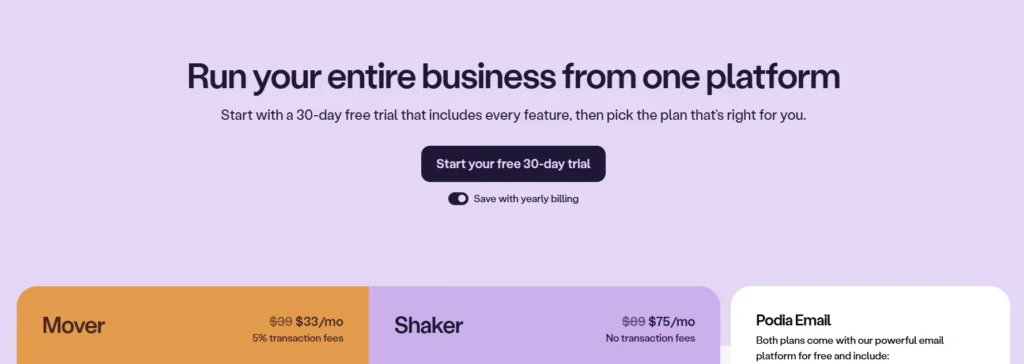
- Mover Plan: For $33/month (with a 5% transaction fee), you get the basic features of Podia, like course creation and digital product selling.
- Shaker Plan: At $75/month, this plan eliminates the 5% transaction fee and provides access to additional features like email marketing and webinars.
- Podia offers a 30-day free trial, and all plans come with essential features, including email marketing and unlimited products.
Customer Support: Getting the Help You Need
Customer support can make a big difference when you're running an online business. Let’s compare how Teachable and Podia handle support.
Teachable’s Customer Support

Teachable offers 24/7 customer support, but response times can vary.
- Support Channels: You can reach out via email or live chat. However, response times might be slower during busy periods.
- Help Center: Teachable also provides a comprehensive knowledge base with articles and tutorials to help you get started.
Podia’s Customer Support

Podia is known for its exceptional customer support.
- Live Chat: Podia offers live chat support during business hours and has a very responsive team.
- Knowledge Base: Podia’s help center is full of guides, tutorials, and FAQs to answer your questions quickly.
Teachable Vs Podia: Pros and Cons
Teachable
Pros
- Offers a free plan to get started.
- Powerful course creation tools with quizzes, assignments, and certificates.
- Multiple monetization options (one-time payment, subscriptions, bundles).
- Detailed analytics and reporting.
- Option to remove Teachable branding on higher-tier plans.
Cons
- Transaction fees on lower plans (Free and Basic).
- Basic plan lacks advanced features like custom reporting and priority support.
- Learning curve for beginners.
- Limited design customization without coding.
Podia
Pros
- No transaction fees on any paid plan.
- Simple and easy-to-use interface.
- All-in-one platform (courses, memberships, digital products, and webinars).
- Built-in email marketing tools.
- Great for community building with integrated chat and discussion features.
Cons
- Fewer advanced features compared to Teachable (no quizzes or assignments).
- Limited design customization options.
- No mobile app for students.
- Some integrations are limited.
Which Platform Should You Choose?
Choosing between Teachable and Podia depends on your business needs, goals, and the level of customization you require.
Choose Teachable if:
- You need advanced course creation features like quizzes, assignments, and certificates.
- You plan to scale your business and need detailed analytics and reporting tools.
- You want more flexibility with pricing and monetization options.
- You're willing to handle integrations or need more customization for your courses.
Choose Podia if:
- You want an easy-to-use, all-in-one platform to sell courses, memberships, and digital products.
- You prefer no transaction fees and want to keep all your earnings.
- You value simplicity and want to avoid complex setups and third-party tools.
- You want built-in community features and email marketing tools.
Teachable is a great choice if you’re focused on creating in-depth, structured courses and need more advanced features.
Podia is ideal if you want simplicity, ease of use, and an all-in-one solution for selling content with a focus on convenience.
Ultimately, the decision comes down to whether you need advanced features and customization (Teachable) or simplicity and an all-in-one platform (Podia).
Customer Reviews on Teachable Vs Podia
Teachable
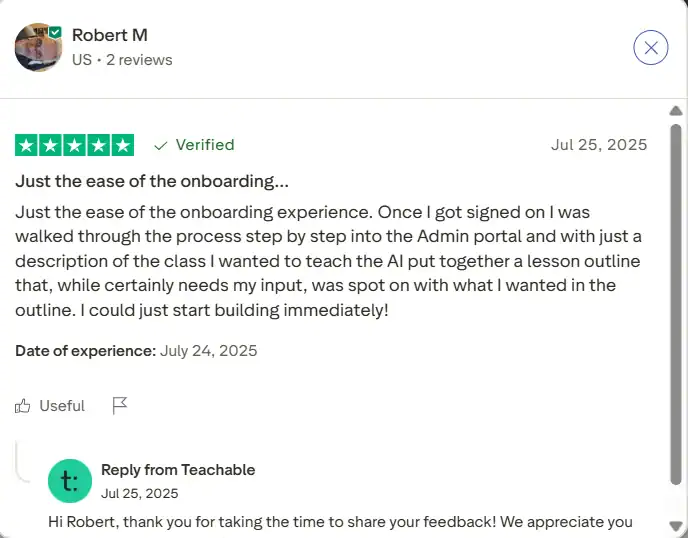
Source: Trustpilot
Podia
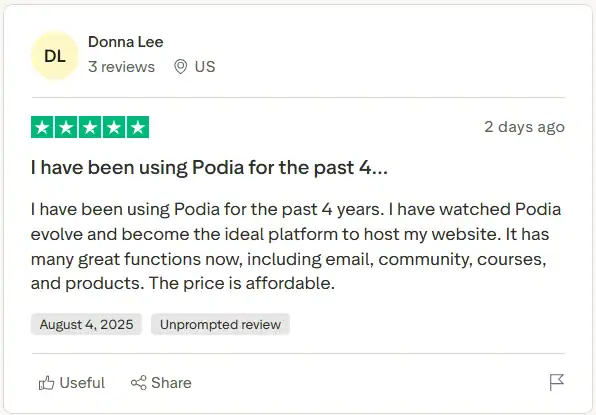
Source: Trustpilot
Quicklinks:
- Teachable Review: Is It The Best Platform For Course Creation?
- Podia Review: An All-in-One Online Course Platform?
- Helium 10 Vs Jungle Scout: Which One Is Best?
- Kajabi Vs Thinkific : Which Platform Is Best To Create Courses?
- Teachable Coupon Code: 20% OFF Promo Codes + Free Trial
- Podia Coupon Code: Save Upto 20% off + 30 Day Free Trial
Conclusion: Teachable Wins for Advanced Features and Flexibility
Teachable stands out as the winner if you’re looking for a more powerful platform with advanced course creation tools, detailed analytics, and flexible monetization options.
It’s the ideal choice for creators who want full control over their content and plan to scale their business with more customization and in-depth features.
While Podia offers simplicity and ease, Teachable gives you the depth and flexibility needed to take your course business to the next level.
